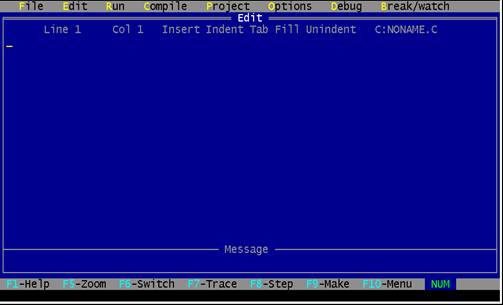谭浩强C语言-01
C
1 C 语言概述
1.1 C语言的发展过程
1.2 当代最优秀的程序设计语言
早期的
1.3 C语言版本
1.4 C语言的特点
1·
| auto | break | case | char | const | continue | default |
| do | double | else | enum | extern | float | for |
| goto | if | int | long | register | return | short |
| signed | static | sizof | struct | switch | typedef | union |
| unsigned | void | volatile | while | | | |
9种控制语句,程序书写自由,主要用小写字母表示,压缩了一切不必要的成分。
Turbo C扩充了
asm _cs
huge interrupt
注意:在C
2·运算符丰富。共有
3·数据结构类型丰富。
4·具有结构化的控制语句。
5·语法限制不太严格,程序设计自由度大。
6·
7·生成目标代码质量高,程序执行效率高。
8·与汇编语言相比,用
1.5 面向对象的程序设计语言
1.6 C和C++
1.7 简单的C程序介绍
【例1.1
main()
{
printf("世界,您好!
}
【例1.2
#include<math.h>
#include<stdio.h>
main()
{
double x,s;
printf("input number:\n");
scanf("%lf",&x);
s=sin(x);
printf("sine of %lf is %lf\n",x,s);
1.8 输入和输出函数
在前两个例子中用到了输入和输出函数
逗号间隔。例如:
其中%lf
【例1.3
int max(int a,int b);
main()
{
int x,y,z;
printf("input two numbers:\n");
z=max(x,y);
printf("maxmum=%d",z);
int max(int a,int b)
{
if(a>b)return a;else return b;
1.9 C源程序的结构特点
1.10 书写程序时应遵循的规则
1.11 C语言的字符集
0
1.12 C语言词汇
a,x, x3, BOOK_1, sum5
当成一个标识符处理,其结果必然出错。
C
1.13 Turbo C 2.0集成开发环境的使用
1.13.1 Turbo C 2.0简介和启动
我们上机实习和将来考试都是使用
我们机房是在
在
1.13.2 Turbo C 2.0集成开发环境
 |
File
除
1.13.3 File菜单
按
File
1. Load
2. Pick
3. New
4. Save
5. Write to
6. Directory
7. Change dir
8. Os shell
9. Quit
说明
以上各项可用光标键移动色棒进行选择
1.13.4 Edit菜单
按
说明:
1) Turbo C 2.0
a) 花括符
b) 尖括符
c) 圆括符
d) 方括符
e) 注释符
f) 双引号
g) 单引号
2) Turbo C 2.0
1.13.5 Run菜单
1. Run
2. Program reset
3. Go to cursor
4. Trace into
5. Step over
6. User screen
1.13.6 Compile菜单
1. Compile to OBJ
2. Make EXE file
1) 由
2) 若没有项目文件名
3) 若以上两项都没有文件名
3. Link EXE file
4. Build all
5. Primary C file
6. Get info
1.13.7 Project菜单
1. Project name
file1.obj
file2.c
file3.c
说明:
2. Break make on
3. Auto dependencies
4. Clear project
5. Remove messages
1.13.8 Options菜单
1. Compiler
1) Model
2) Define
3) Code generation
4) Optimization
5) Source
6) Error
7) Names
2. Linker
1) Map file menu
2) Initialize segments
3) Devault libraries
4) Graphics library
5) Warn duplicate symbols
6) Stack warinig
7) Case-sensitive link
3. Environment
1) Message tracking
² Current file
² All files
² Off
2) Keep message
3) Config auto save
4) Edit auto save
5) Backup file
6) Tab size
7) Zoomed windows
8) Screen size
4. Directories
(1) Include directories
(2) Library directories
(3) Output directoried
(4) Turbo C directoried
(5) Pick file name
5. Arguments
6. Save options
7. Retrive options
1.13.9 Debug菜单
按Alt+D
1. Evaluate
1) Expression
2) Result
3) New value
2. Call stack
3. Find function
4. Refresh display
1.13.10 Break/watch 菜单
1. Add watch
2. Delete watch
3. Edit watch
4. Remove all
5. Toggle breakpoint
6. Clear all breakpoints
7. View next breakpoint
1.13.11 Turbo C 2.0 的配置文件
所谓配置文件是包含



